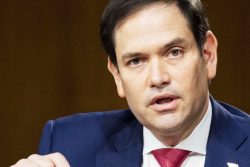Recently, the issue of drug use in schools in Guyana has made the headlines with the announcement by the Customs Anti-Narcotic Unit (CANU) that it had discovered a drug ring inside two Georgetown schools. The drug ring was allegedly distributing the psychoactive drug ectasy, which is used primarily as a recreational drug and induces feelings of increased empathy, increased energy levels, euphoria, a distorted perception of time, and heightened sensations of touch due to the drug being a combination of a stimulant and a hallucinogen.
The short term effects of the drug include the suppression of basic needs like eating, drinking and sleeping; muscle cramps, hallucinations and blurred vision among other negative reactions. Long term use carries consequences including depression, anxiety, insomnia, memory loss and dependency on the drug. Overdose from the drug leads to complications warranting immediate medical attention and can include seizures, panic attacks, loss of consciousness, and damage to the body’s internal organs.
In the case referenced above, officials at one of the schools apparently got wind of the drug use and distribution in the school after a student became ill and was hospitalised. Internal investigations by the school produced enough evidence to warrant calling in the Guyana Police Force and CANU whose further investigations led to another school and the uncovering of the drug ring.
The issue of drug use inside our public and private schools is not a new one. With the proliferation of American pop culture, via television, movies and social media, it is likely that it will be an uphill battle by fiercely committed school administrators, backed by a reliable Police Force, and anti-drug agencies such as CANU, to combat this lingering and very likely growing scourge.
To this end it behoves the Ministry of Education and its Department of Culture, Youth & Sport, possibly with collaboration from the Ministry of Social Cohesion, to take the forefront in equipping all schools and youth-based organizations with the necessary tools to combat this plague which has begun to affect our youths, and which may be responsible to some degree for any number of the social ills negatively impacting youth in our society today.
Tools will include the means to adequately and accurately assess the level of infiltration of the school system by drug dealers, a documented evidence-based strategy to deal with the problem, rules of procedure to guide teachers and administrators of youth in handling cases, and an upgrade in the security afforded schools, increasing the competence of the school to handle threats until the police arrive.
The Guyana Police Force and CANU also need to consider that if the drugs are definitely being distributed in two schools, then they need to dig deeper and conduct quiet investigations into a wider cross section of schools and youth organizations to ascertain the level of infestation of these organizations by the parasitic drug dealers and their suppliers. It also does not require a far stretch of the imagination to consider that night clubs and bars might also be a point of distribution and sale of such drugs. Drugs plus alcohol is a dangerous cocktail the abuse of which generally leads to increased violence and criminal activity, not to mention traffic accidents and suicide – due equally to the immediate effects of the drugs and also the after effects such as depression and other negative feelings which persist long after the initial effects have worn off.
In Guyana, the use of the term ‘illegal drug’ is mostly considered as referencing cocaine or marijuana. However, with the increasing abuse of prescription and recreational drugs, it is time that public education is directed at students and parents alike as to the dangers of these drugs, and the signs and symptoms that users tend to exhibit. It is quite possible that many parents are totally clueless as to the existence and appearance of drugs such as ‘ecstasy’ and they certainly might be in the dark with regard to the effects of the drug and the symptoms of its use.
In December 2016, the Ministry of Public Security unveiled its 2016-2020 National Drug Strategy Master Plan, and since 2015 the Ministry also conducted its Guyana Secondary School Drug Prevalence Survey Project with assistance from the Organization of American States (OAS) and the Inter-American Drug Abuse Control Commission. However, no plan or strategy, however well-crafted, is of any use without meticulous and dedicated implementation. While educating young people as to the dangers of the use of illegal drugs including psychoactive drugs and the abuse of prescription drugs is absolutely necessary, nothing puts a dent in illegal activity like good old-fashioned police work resulting in discovery, arrests, prosecution and sentencing.
The best deterrence to an illegal act is a heightened awareness of certain detection, exposure and swift and condign punishment. The persons at great risk here are our youth, who are literally the future of our country. With such a small population as ours, with an already high rate of criminality and corruption infesting our body politic, we can scarcely risk further damage to our national ethos by the actions of a few greedy and unscrupulous Guyanese preying on our young and vulnerable children in pursuit of monetary reward.
All arms of the justice system must converge in seeing to it that the message is sent to all perpetrators that the illegal sale of all kinds of drugs, alcohol and tobacco to our young children will be aggressively investigated and prosecuted to the full extent of the law.
If those under whose ambit this matter falls allow apathy to overtake this issue, it will be a terrible dereliction of duty in relation to our vulnerable youth.









